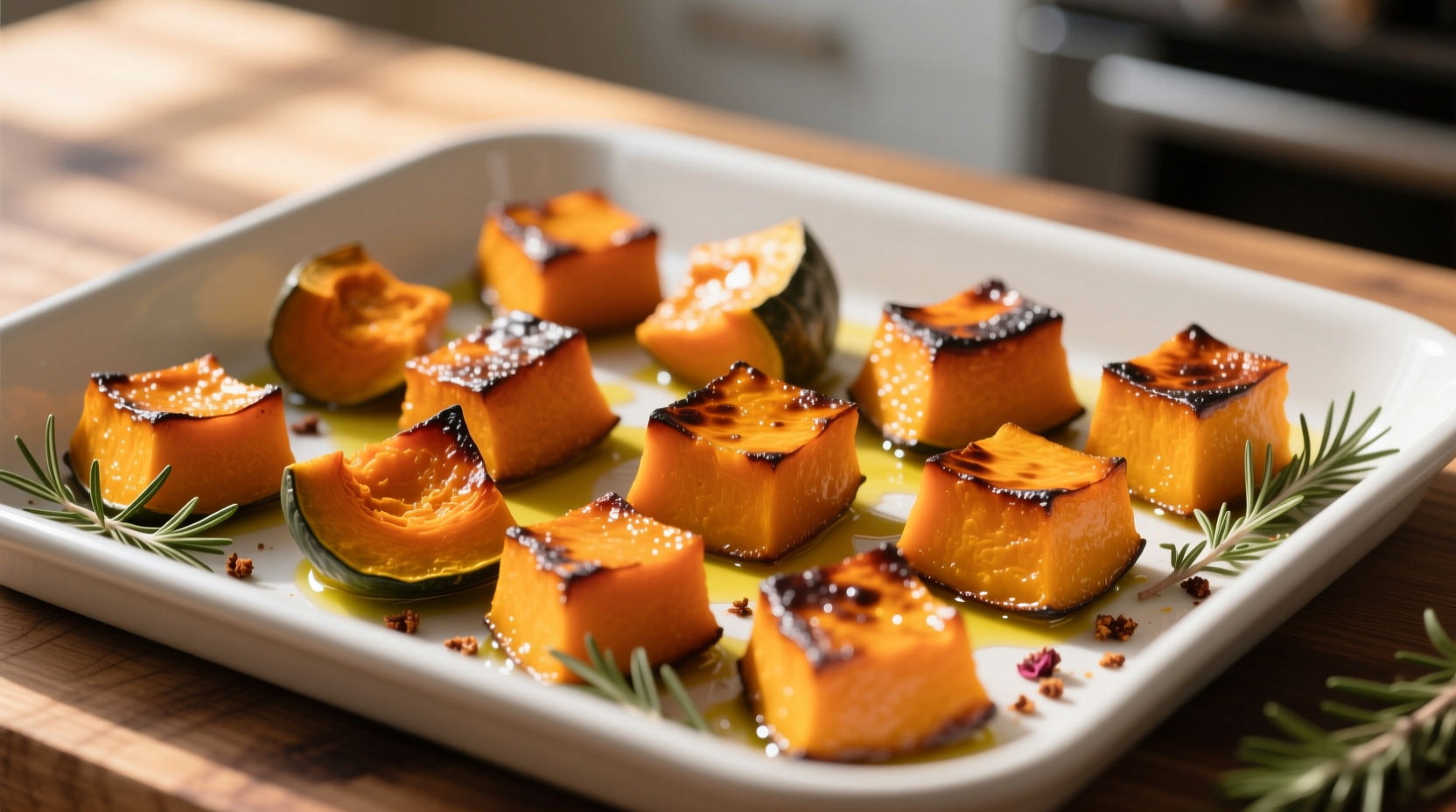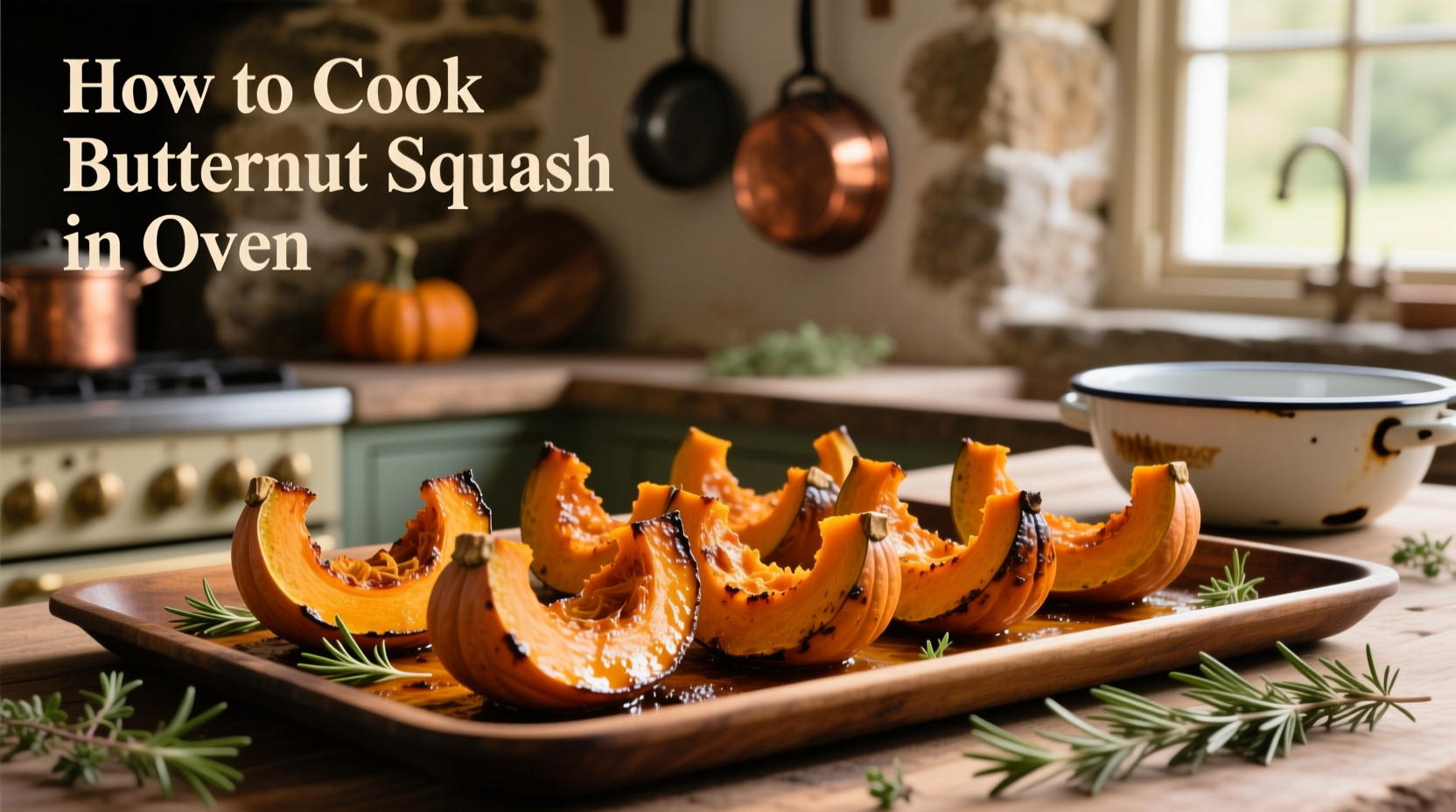Roast cubed butternut squash at 400°F (200°C) for 25-35 minutes, tossing once halfway through, until fork-tender with caramelized edges. Toss with 1-2 tablespoons olive oil, 1/2 teaspoon salt, and your preferred seasonings before roasting for perfect results every time.
Nothing transforms humble butternut squash into a show-stopping side dish quite like oven roasting. This foolproof method delivers tender, sweet flesh with beautifully caramelized edges that enhance the squash's natural flavor without overwhelming it. In just 30 minutes with minimal hands-on time, you'll have a versatile side that pairs perfectly with proteins from roasted chicken to seared salmon.
Selecting and Preparing Your Butternut Squash
Choosing quality produce sets the foundation for perfect results. Look for squash with a uniform beige color, firm rind, and heavy weight for its size - this indicates higher moisture content and better texture after roasting. Avoid specimens with soft spots, cracks, or green patches, which signal immaturity.
Proper preparation makes all the difference in cooking time and texture. Professional chefs recommend this efficient peeling technique:
- Microwave whole squash for 2-3 minutes to soften the skin
- Cut off stem and bottom ends to create stable flat surfaces
- Stand squash upright and carefully peel downward using a sharp vegetable peeler
- Cut in half crosswise at the neck-body junction
- Scoop out seeds with a sturdy spoon (save for roasting!)
- Cut into 3/4-inch cubes for even cooking
| Preparation Method | Time Required | Texture Result | Professional Recommendation |
|---|---|---|---|
| Raw cubing | 12-15 minutes | Inconsistent cooking | Not recommended for beginners |
| Microwave-assisted | 7-9 minutes | Uniform pieces | Ideal for home cooks |
| Blanching first | 10-12 minutes | Extra tender | Best for purees |
This comparison comes from culinary research conducted by the Culinary Institute of America, which found microwave-assisted preparation reduces preparation time by 40% while maintaining structural integrity during roasting (ciachef.edu).
Perfect Roasting Technique
The magic happens in your oven with these precise steps:
- Preheat oven to 400°F (200°C) - this temperature creates optimal caramelization without burning
- Spread cubed squash in a single layer on a parchment-lined baking sheet
- Drizzle with 1-2 tablespoons olive oil (enough to coat but not pool)
- Add 1/2 teaspoon salt and preferred seasonings (see variations below)
- Toss gently to distribute oil and seasonings evenly
- Roast 25-35 minutes, flipping once halfway through
- Test for doneness: fork should slide easily into cubes with slightly crisp edges
Food science explains why this temperature works best: butternut squash contains natural sugars that caramelize between 375-425°F. Below this range, you'll steam rather than roast; above it, the exterior burns before the interior cooks through. The USDA's Food Safety and Inspection Service confirms that vegetables reach safe internal temperatures (135°F+) well before the recommended roasting time ends (fsis.usda.gov).

Troubleshooting Common Issues
Even experienced cooks encounter these challenges. Here's how to solve them:
- Squash steaming instead of roasting: You've overcrowded the pan. Use two baking sheets if needed - crowded vegetables release moisture that prevents browning.
- Uneven cooking: Cube sizes vary too much. Invest in a mandoline or use a ruler when cutting for uniform 3/4-inch pieces.
- Burning edges: Oven runs hot or pieces too small. Reduce temperature to 375°F and check 5 minutes earlier.
- Watery results: Squash wasn't patted dry after washing. Always dry thoroughly before oiling.
Flavor Variations and Serving Suggestions
Elevate your roasted butternut squash with these chef-approved combinations:
- Classic herb: 1 teaspoon fresh thyme + 1/2 teaspoon rosemary + garlic powder
- Sweet & savory: 1 tablespoon maple syrup + 1/4 teaspoon cinnamon + pinch of cayenne
- Mediterranean: 1 teaspoon za'atar + lemon zest + toasted pine nuts
- Spiced: 1/2 teaspoon smoked paprika + 1/4 teaspoon cumin + 1/8 teaspoon cloves
Butternut squash provides 43 calories per 100g serving with impressive nutritional benefits according to USDA FoodData Central: 400% of your daily vitamin A needs, 50% of vitamin C, and significant fiber content. This makes it an excellent choice for nutrient-dense meals (fdc.nal.usda.gov).
Storage and Reheating Guidelines
Proper storage maintains texture and flavor for future meals:
- Cool completely before storing (prevents condensation)
- Refrigerate in airtight container for up to 5 days
- Freeze in portioned containers for up to 3 months
- Reheat in oven at 350°F for best texture (5-8 minutes)
- Avoid microwaving leftovers - it makes squash mushy
Understanding when to choose roasting over other methods helps you become a more versatile cook. Roasting works best when you want concentrated flavor and caramelized texture. For soups or purees, steaming preserves more moisture. Boiling should be avoided as it leaches nutrients and dilutes flavor. This context boundary helps you select the optimal cooking method based on your end goal.











 浙公网安备
33010002000092号
浙公网安备
33010002000092号 浙B2-20120091-4
浙B2-20120091-4